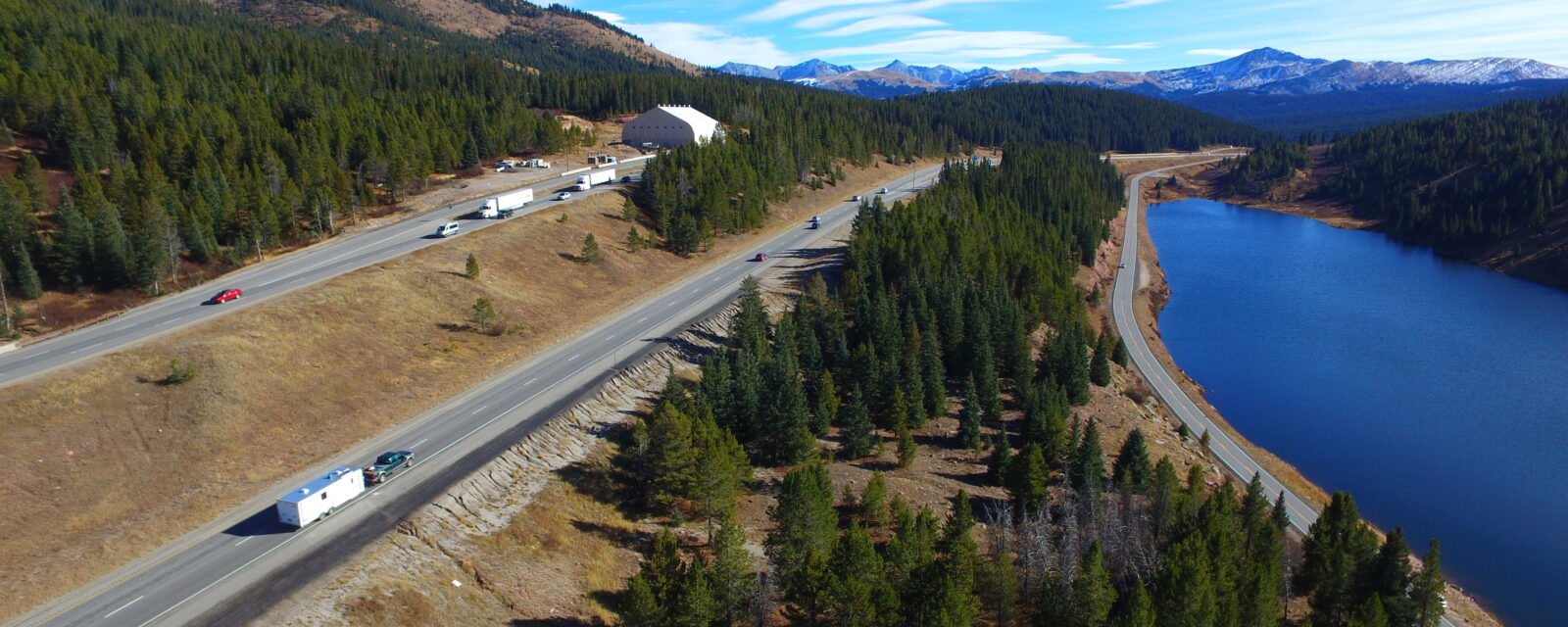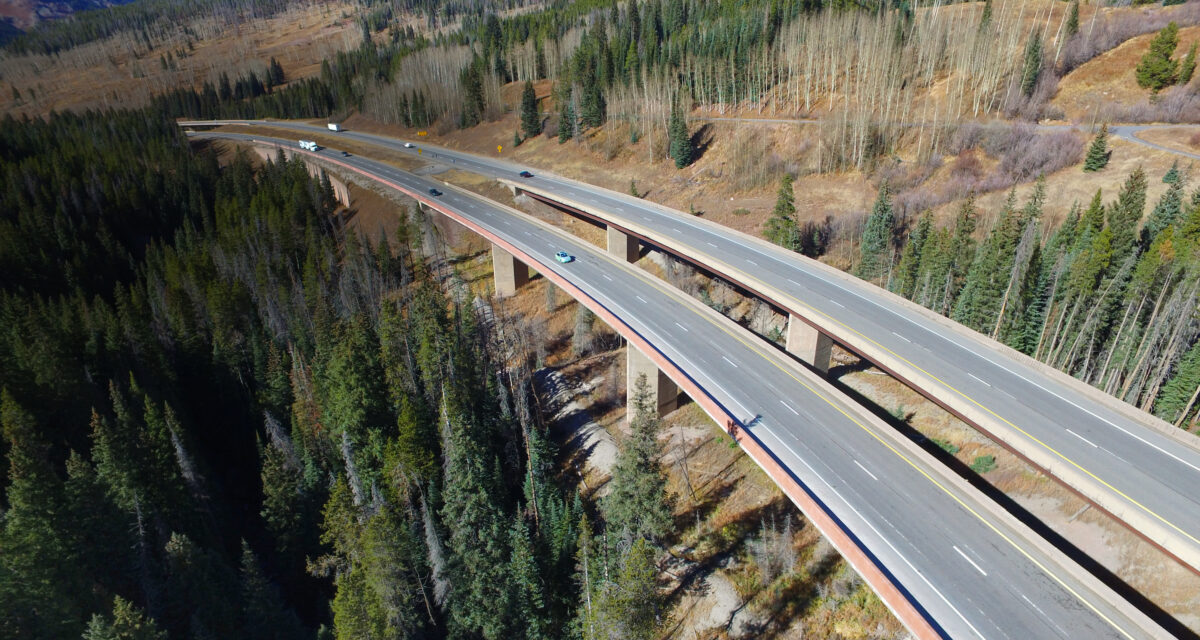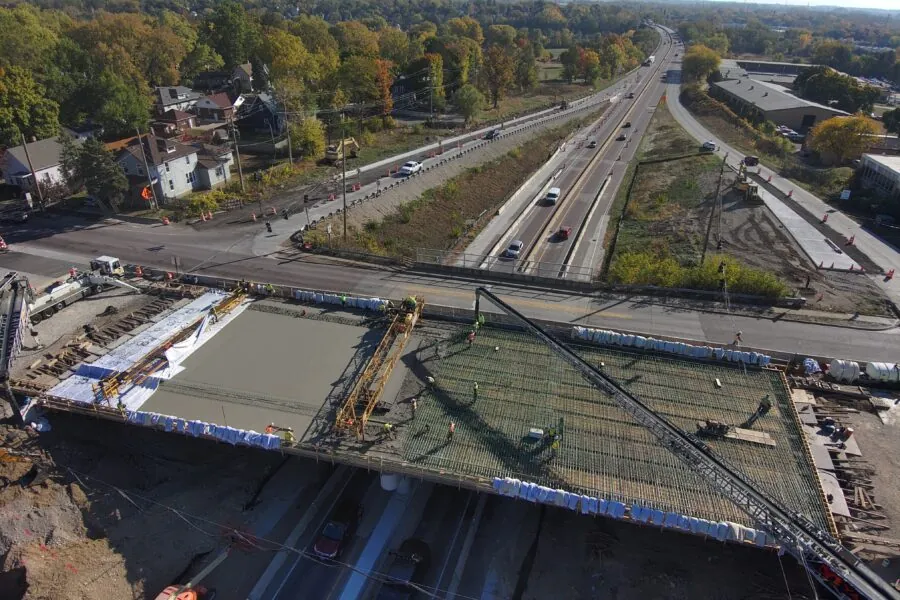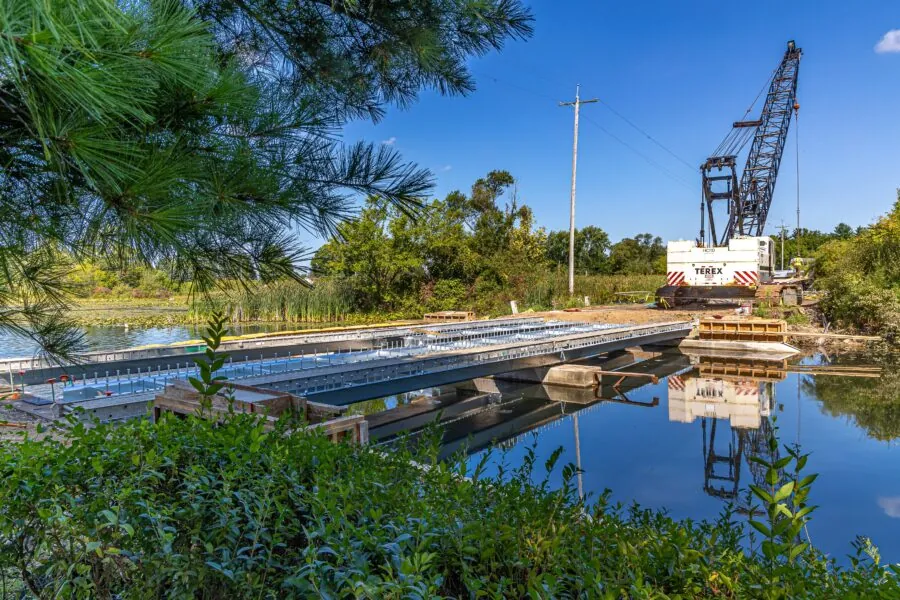
Westbound & Eastbound Peak Period Shoulder Lane Projects
Project Details
Client / Owner
Colorado Department of Transportation
Delivery Method
CM/GC
Construction Value
$138 million
I-70 Westbound peak period shoulder lane (PPSL) segment
This project includes the reconstruction and widening of 12-miles of general-purpose lanes and shoulder of westbound I-70 from Empire Junction to east of Idaho Springs in select locations on the existing alignment to accommodate a lane on the shoulder for use during peak travel periods.
Drainage enhancements include a storm system for minor and major storm events and water quality facilities. At State Highway 103, I-70 is slightly realigned to enhance safety and improve drainage. Two lanes remain open and free to all travelers at all times.
During non-peak travel periods, the PPSL is closed to traffic and functions as an extra-wide shoulder. Pricing is adjusted to achieve the desired lane use and provide drivers with a reliable travel time option through the corridor during peak periods.
Other important areas of construction include ramp improvements at SH 103 (Idaho Springs), rock fall mitigation at five locations, MSE wall construction in excess of 12,000 LF, installation of Type 7 and Type 9 guardrail, utility construction, fiber optic upgrades, and reconstruction and re-alignment to reduce merge conflicts between trucks and traffic in the acceleration lanes at Dumont Port-of-Entry.

I-70 Mountain Express Lanes (EB peak period shoulder lanes) segment
The I-70 Peak Period Shoulder Lane project, also known as the I-70 PPSL, is located on Interstate 70 from Empire Junction to east of Idaho Springs, in the mountains of Colorado. The project is intended to improve eastbound operations and safety during times of heaviest traffic, especially on weekend and holiday afternoons, when skiers and tourists are heading back to the Denver metro area. During these peak times, the project will allow travelers to optionally pay a toll to enter a new eastbound lane. The two existing through lanes will still be available and will continue to be free, but are also expected to benefit operationally due to the vehicles using the new tolled lane. In order for the system to work, the project also includes extensive Active Traffic Management features such as variable speed limits, and demand-based adjustable tolls. Tolls will be recorded by transponder and license plate readers, which will communicate to the existing tolling infrastructure at E-470 for toll levying, billing and collections. To make room for the additional width along this 13-mile long project, two bridges will be demolished and replaced, along with extensive new retaining walls that will minimize the amount of new footprint needed. New drainage and water quality features will also be constructed, one interchange will be modified, several bridges will be rehabilitated to extend their service lives, and the entire project will be overlaid with a new hot mix asphalt driving surface.
In order to assure that construction activities comply with the contract and with State and Federal requirements, a team led by Tsiouvaras, Simmons, Holderness is providing construction management, observation of construction activities, materials testing, and other expertise under the direction and on behalf of CDOT.



